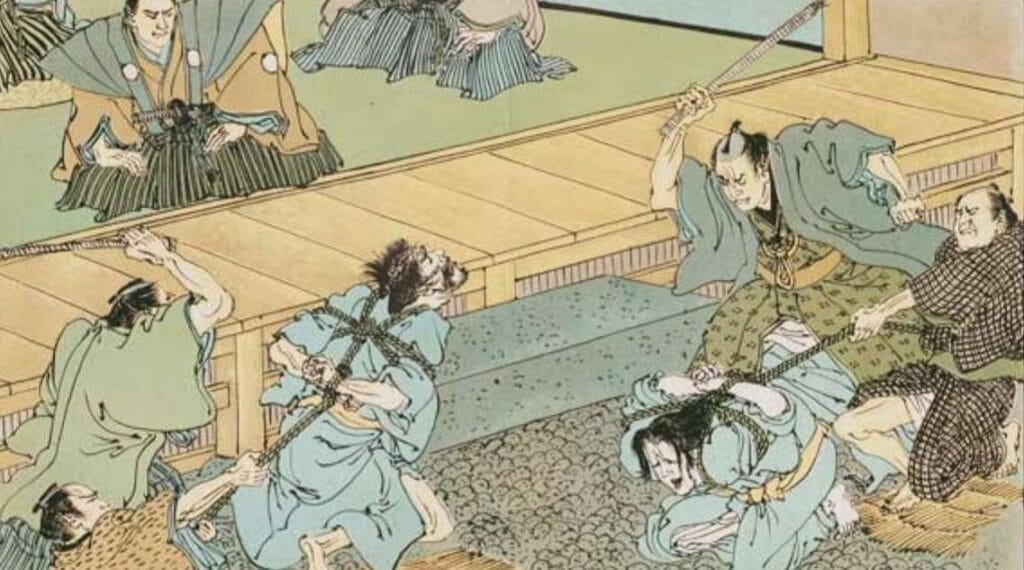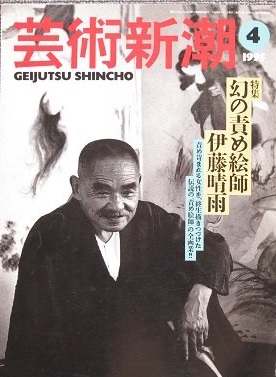Few people know that “Shibari (Japanese bondage)”, the technique of tying a person with ropes made of natural materials, is extremely common in Japan. This practice is so widespread in Japan that thousands of people come every day to watch the special display of a man tying a woman with strange knots and many ropes. It’s all based on unique art with sexual connotations. But where did this kind of “entertainment” trend start in Japan?
Shibari, which means “to tie” in Japanese, is a traditional rope tying skill that originated in 17th century Japan. Before we can analyze Shibari, we must first examine the development of its ancestor, Hojojutsu.
By the mid-1500s, there were over 100 different schools in Japan where the martial art of Hojojutsu was regularly practiced. The goal of these schools was to train future soldiers or “law enforcement officers” how to immobilize an enemy on the battlefield using one or more ropes, how to capture and transport prisoners, and how to arrest criminals in peacetime.

Also, the bond had to be examined essentially considering the social status of the criminal or enemy. A specific individual (in peacetime or on the battlefield) was to be identified by his physical proportions, social rank, dress or armour, age and sex.
As stated earlier, there were schools in Japan that taught men unique methods and techniques of knot tying. For example, monks, warriors, bureaucrats, beggars, and prostitutes were all chained in various ways. Not only with various knots and processes, but also with ropes.
By the way, Ropes have had extraordinary importance in Japan since ancient times. For example, in Japan, Shimenawa Rope made from freshly harvested rice straw has been routinely wrapped around Shinto shrines, temple entrances, torii gates, sacred places, and as a symbol of sacred space in general since ancient times.
Traditional Japanese clothing did not have buttons, instead they were fastened with delicate textile ribbons and ropes. Katana, a traditional Japanese sword, with an interwoven fabric tape hilt. The barrier of the sumo ring is also made of ropes. Because of these connections between ropes and sacred sites, the Japanese began to create a bond between affection, humiliation, and suffering.
In the late 1800s, Western ideals, as well as more overt tactics of sadism and masochism, such as the work of the Marquis de Sade, began to spread into once closed Japan. All this influenced upper-class Japanese people, who learned to equate bound and naked women, often in humiliating positions, with something erotic.
But how did the practice of tying women develop into an art form?
After the First Sino-Japanese War, the Hongo Haruki-za Theater in Tokyo produced a theater play titled “Nisshin Senso – Yochi no Kataki-tan” in June 1896. According to source accounts, many Japanese nurses in Manchuria were forced into constant bondage and sexually abused by Chinese soldiers, but eventually forgave their tormentors. A fourteen-year-old boy was in the crowd at one of these performances, and the show shook him to the core.

This young man was Ito Seiyuu, who would go on to become known as the “Father of Kinbaku” as an artist, photographer, and inventor. He was the person who began creating paintings of tying, which evolved into dramatic performances in which tying a woman with specific and elaborate knots became an art form.
The phrases “Shibari” & “Kinbaku” are often used interchangeably to describe the Japanese rope bondage art form.
- Shibari is a broad phrase meaning “to tie” and can apply to any type of rope tying.
- Kinbaku, on the other hand, refers to a more artistic and aesthetically pleasing type of rope bondage. It is often regarded as a type of performance art, with an emphasis on the beauty and complexity of the knots and ties used.
While both Shibari and Kinbaku involve the use of rope to tie a person, Kinbaku is distinguished by rigorous and sophisticated knot and tie patterns, with special attention paid to the model’s body posture and the overall composition of the figure.

About the Author
Manish love to write and he is a Civil Servant. Users can follow Manish on Instagram ![]()
What you will find in Dubai !!
Dubai is one of the most amazing and interesting cities in the world. All these…
Who is Tulsi Gowda known as Encyclopedia of Forests
When Tulsi Gowda received Padma Shri, social media was full of praise for her. Indian President Ram…
11 Goa Travel Tips: Navigating Adventures, Scams, and Bikinis!
All right, adventurers, pay attention! Here is some tangy advice to help you avoid sticky…
how to be happy? 11 scientific tips !
We all know that the meaning of happiness can be different for different people, but…
What happened to the ancient Sumerians ?
Ancient Sumerians in Mesopotamia, were Mesopotamia’s oldest historical people (modern Iraq). These individuals are credited with creating…
Why has the population and life expectancy decreased in Swaziland?
There is a very small country in the very south of Africa. Many have heard…





